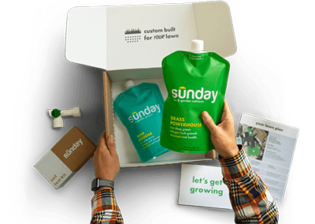Hey there, Nevada homeowners! Ever gazed out your window, dreaming of a lush, emerald lawn – only to remember the realities of our arid, desert-like climate? Fear not, because we’re about to reveal the secret to achieving that verdant dream!
Did you know that transforming your landscape into the oasis of your dreams isn’t an impossible feat in Nevada? Yes, that’s right! Despite our sweltering summer heat and persistent drought conditions, you can indeed cultivate a gorgeous green lawn. The magic potion? It’s all about choosing the best grass seed for Nevada.
Meet the superheroes of this turf tale – Kentucky Bluegrass, Perennial Ryegrass, Fine Fescue, and Tall Fescue. These aren’t just whimsical names; they’re the sturdy, heat-tolerant grass types that don’t just survive but thrive, under Nevada’s sizzling sun and limited water conditions.
So, gear up with your gardening tools as we embark on a journey to greenify your landscape. Selecting the best grass seed mix tailored to your specific needs is your first step towards crafting a beautiful, sustainable lawn that stands tall in the face of Nevada’s unique challenges. Prepare to make your lawn the envy of the neighborhood!
Key Takeaways
- Kentucky Bluegrass, Perennial Ryegrass, Fine Fescue, and Tall Fescue are all great turf grass options for Nevada lawns.
- When selecting grass seed, it’s important to consider Nevada’s unique climate and growing challenges.
- By selecting the right grass seed mix for your specific needs, you can create a beautiful and sustainable lawn that will thrive in Nevada’s environment.
Looking for the best grass seed for your region?
Our smart lawn plans are designed to work perfectly with your local soil and climate conditions, without any of the toxic stuff.
Use the code EHG20 for an instant $20 discount!
- Personalized lawn care: Custom lawn plans based on soil analysis, climate data, and your specific lawn needs.
- Convenience with a conscience: Products that are not only easy to use but also safe for you, your pets, and the planet.
- Science-backed formulas: Bio-based formulas contain effective, natural ingredients like seaweed, molasses, and iron.
- Expert support: Get one-on-one guidance from a real person and rest easy with Sunday's satisfaction guarantee.
Kentucky Bluegrass
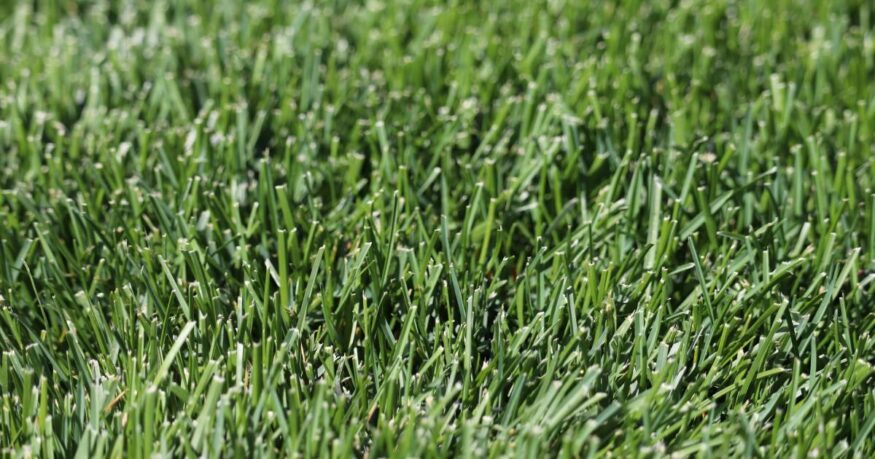
| Also Known As | Poa pratensis L. |
| Type of Grass | Cool season perennial |
| Optimal Zones | Northern cool season zone, transition zones |
| Root Structure | Shallow |
| Winter Hardiness | Excellent |
| Shade Tolerance | Poor to Good |
| Water Requirements | High |
| Drought Tolerance | Poor |
| Self Repair Capacity | Excellent |
| Overall Maintenance Requirements | High |
Why Kentucky Bluegrass is The Most Popular Choice For Nevada
Kentucky bluegrass is a popular grass type used in Nevada. It is a cool-season grass that can withstand cooler temperatures, making it an excellent choice for those living in northern Nevada. It has a fine texture and a bright green color that is perfect for lawns.
Kentucky bluegrass is a great choice for those who want a dense and lush lawn. It spreads easily and is tolerant of moderate traffic. However, this isn’t a “hands-off” lawn and does require regular watering and mowing.
To plant Kentucky bluegrass, you can either seed your lawn or use sod. If you are seeding your lawn, it is best to do so in the fall or spring when temperatures are cooler. The ideal mowing height for Kentucky bluegrass is between 1.5 to 2.5 inches.
Overall, Kentucky bluegrass is a great turf grass for those living in Nevada, especially in the cooler northern regions. It is a great choice for those who want a dense and lush lawn. However, it does require a moderate amount of maintenance, including regular watering and mowing.
Learn More: Read our comprehensive state-by-state grass selection guides here.
Perennial Ryegrass
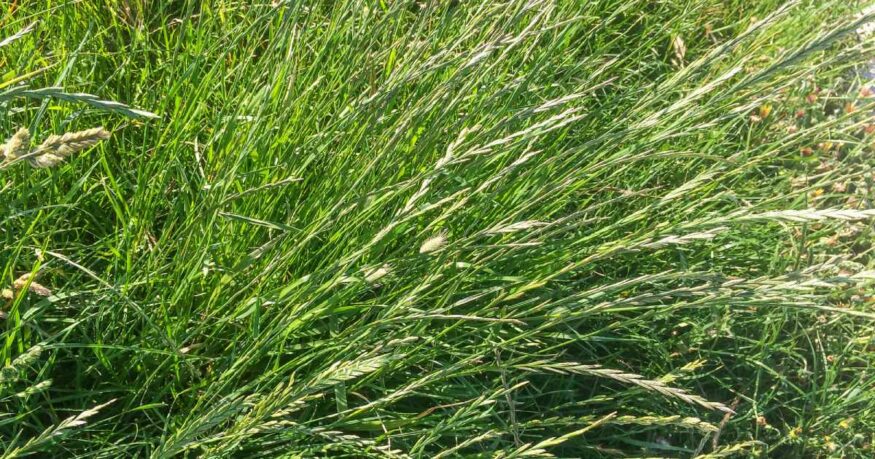
| Also Known As | Lolium perenne L. |
| Type of Grass | Cool season perennial |
| Optimal Zones | Mild northern zones |
| Root Structure | Deep |
| Winter Hardiness | Good to excellent |
| Shade Tolerance | Moderate |
| Water Requirements | High |
| Drought Tolerance | Good |
| Self Repair Capacity | Excellent wear tolerance |
| Overall Maintenance Requirements | Moderate to high |
What Makes Perennial Ryegrass A Great Grass For Nevada
Perennial ryegrass is a great turf grass option for Nevada due to its heat tolerance and moderate water requirements. It is particularly suited for areas with cool season climates and is perfect for overseeding lawns in the fall.
One of the main advantages of perennial ryegrass is its fast germination time. It can establish a dense, green lawn in a short amount of time, making it a great option for those who want quick results. Additionally, perennial ryegrass has good traffic tolerance, making it ideal for areas with high foot traffic.
However, it is important to note that perennial ryegrass is not well-suited for areas with dense shade. It also has a shorter lifespan compared to other grass types and may require reseeding after a few years.
To sow perennial ryegrass, prepare the soil by removing any debris and loosening the top layer. Spread the seed dense enough to achieve the desired coverage, usually around 6-8 pounds per 1000 square feet. Water regularly and keep the soil moist until the grass is established. Once established, perennial ryegrass requires moderate watering and mowing to a height of 2-3 inches.
Overall, perennial ryegrass is a great option for those looking for a fast-growing, low-maintenance grass that can handle the heat and moderate water requirements of Nevada’s climate.
Looking for the best grass seed for your region?
Our smart lawn plans are designed to work perfectly with your local soil and climate conditions, without any of the toxic stuff.
Use the code EHG20 for an instant $20 discount!
- Personalized lawn care: Custom lawn plans based on soil analysis, climate data, and your specific lawn needs.
- Convenience with a conscience: Products that are not only easy to use but also safe for you, your pets, and the planet.
- Science-backed formulas: Bio-based formulas contain effective, natural ingredients like seaweed, molasses, and iron.
- Expert support: Get one-on-one guidance from a real person and rest easy with Sunday's satisfaction guarantee.
Fine Fescue
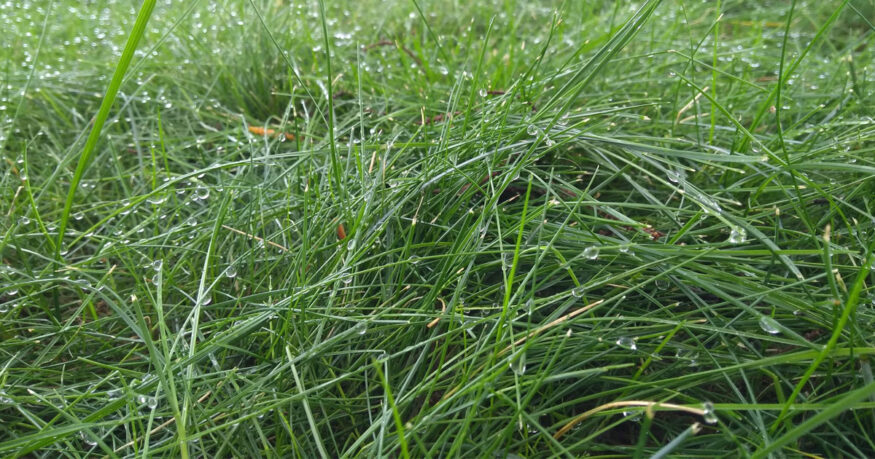
| Also Known As | Hard fescue, strong creeping red fescue, slender creeping red fescue, sheep fescue, chewings fescue; Festuca L. |
| Type of Grass | Cool season perennial |
| Optimal Zones | Northern zones |
| Root Structure | Medium |
| Winter Hardiness | Excellent |
| Shade Tolerance | Excellent |
| Water Requirements | Medium to High |
| Drought Tolerance | Excellent |
| Self Repair Capacity | Limited |
| Overall Maintenance Requirements | Low |
Why Fine Fescue Grows well in Nevada
Fine fescue is one of the best grasses for Nevada lawns because it’s drought-tolerant, low-maintenance, and can thrive in both sun and shade. It’s particularly well-suited for the cooler, high-elevation regions of the state, such as Reno and Lake Tahoe.
One of the benefits of fine fescue is that it doesn’t require a lot of water, making it ideal for areas with low rainfall or limited watering resources. However, it does require well-drained soil, so make sure your yard has good drainage before planting.
Fine fescue has a fine texture and a medium-green color, making it a great turf grass for landscaping. It’s also a good choice for areas with moderate foot traffic. However, it’s not the best grass for high-traffic areas or for sports fields.
To sow fine fescue, prepare the soil by removing any debris and tilling to a depth of 4-6 inches. Spread the seed mix evenly over the soil and rake it in lightly. Water the area well and keep it moist until the grass is established.
To care for fine fescue, mow it to a height of 2-3 inches and water deeply but infrequently. Fertilize once or twice a year with a nitrogen-rich fertilizer, and overseed in the fall to keep the grass looking lush and healthy.
Overall, fine fescue is a great choice for Nevada homeowners looking for a low-maintenance, drought-tolerant grass that can thrive in a variety of conditions.
Tall Fescue
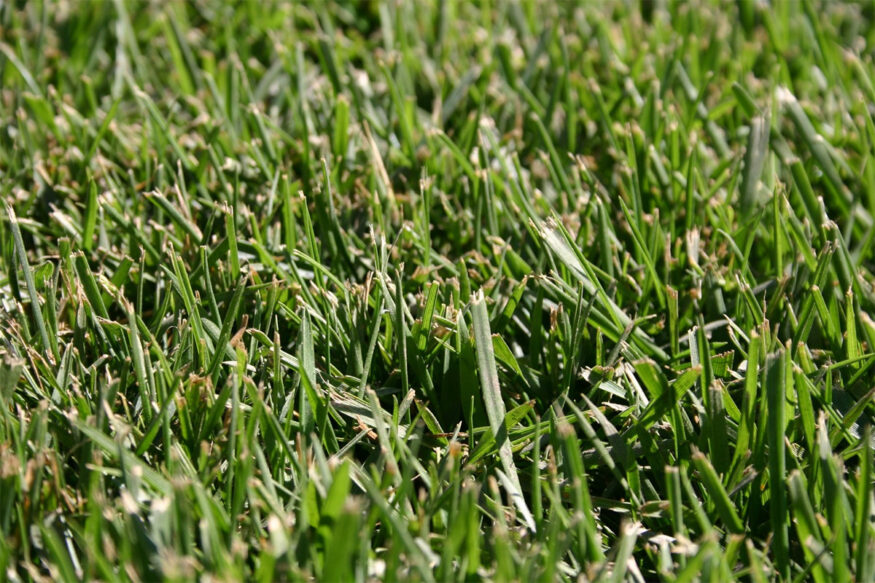
| Also Known As | Lolium arundinaceum (formerly Festuca arundinacea) |
| Type of Grass | Cool season perennial |
| Optimal Zones | Northern through transition zones |
| Root Structure | Deep |
| Winter Hardiness | Excellent |
| Shade Tolerance | High |
| Water Requirements | Medium to High |
| Drought Tolerance | Excellent |
| Self Repair Capacity | Limited |
| Overall Maintenance Requirements | Low |
Why Tall Fescue Is a Popular Grass seed Choice
Tall fescue is a great turf grass for Nevada because it is drought-tolerant and can withstand the heat. It is a cool-season grass that is well-suited for the cooler areas of the state, such as Reno.
Tall fescue has a medium to dark green color and can grow up to 3 feet tall. It has a moderate traffic tolerance and a mowing height of 2 to 3 inches. It spreads by tillering and can be overseeded with ryegrass in the winter for year-round greenery.
One downside of tall fescue is that it has a low tolerance for saline soils. It is also not as heat-tolerant as warm-season grasses like bermudagrass or buffalograss.
To plant tall fescue, prepare the soil by removing any weeds or debris and tilling the soil to a depth of 6 inches. Then, spread the seed mix evenly over the soil and rake it in lightly. Water the area thoroughly and continue to water it regularly until the grass is established.
To care for tall fescue, water it deeply once a week and fertilize it in the fall and spring. Mow it to a height of 2 to 3 inches and avoid mowing it when it is wet. Overall, tall fescue is a great option for homeowners in Nevada looking for a cool-season grass that can handle the heat.
Nevada’s Climate And Growing Challenges For Lawns

Climate
Nevada’s climate is mostly arid, with hot summers and cold winters. The state is divided into three climate zones: the Mojave Desert in the south, the Great Basin in the north, and the Sierra Nevada Mountains in the west.
The southern part of the state has a hot desert climate with temperatures above 50 degrees F, while the northern part has a cold desert climate with temperatures below 50 degrees F.
Soil Conditions
Nevada’s soil is mostly alkaline, with low organic matter and nutrients. The soil is also prone to erosion and compaction. To improve soil quality, add organic matter such as compost, peat moss, or manure.
Weeds, Pests & Diseases
Weeds, pests, and diseases are common problems for Nevada lawns. Weeds such as cheatgrass, Russian thistle, and yellow starthistle can be controlled by hand-pulling or herbicides.
Pests such as cutworms, armyworms, and sod webworms can be controlled by using insecticides. Diseases such as brown patch, dollar spot, and rust can be controlled by using fungicides.
Other Challenges
Water scarcity is a major challenge for Nevada lawns. The state has recently experienced a megadrought, and water restrictions are in place. To conserve water, consider using alternative drought-tolerant grasses such as buffalo grass, blue grama grass, or seashore paspalum. Another challenge is the high traffic tolerance required for lawns in Nevada. To address this, use grasses such as tall fescue or Bermuda grass that can withstand heavy foot traffic.
In summary, growing a lawn in Nevada can be challenging due to the state’s arid climate, alkaline soil, water scarcity, and weed, pest, and disease problems. However, by selecting the right grass type and implementing proper lawn care practices, you can have a great-looking lawn.
Looking for the best grass seed for your region?
Our smart lawn plans are designed to work perfectly with your local soil and climate conditions, without any of the toxic stuff.
Use the code EHG20 for an instant $20 discount!
- Personalized lawn care: Custom lawn plans based on soil analysis, climate data, and your specific lawn needs.
- Convenience with a conscience: Products that are not only easy to use but also safe for you, your pets, and the planet.
- Science-backed formulas: Bio-based formulas contain effective, natural ingredients like seaweed, molasses, and iron.
- Expert support: Get one-on-one guidance from a real person and rest easy with Sunday's satisfaction guarantee.

